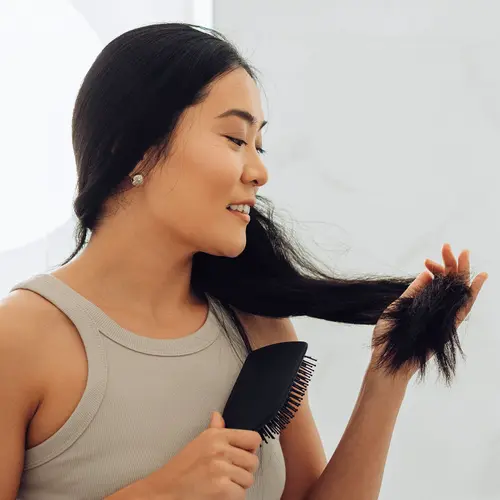Two common ingredients in beauty and skin care products are alpha hydroxy acids (AHAs) and beta hydroxy acids (BHAs). They’re both chemical exfoliants that help remove dead skin cells from the top layer of your skin.
Some say AHAs and BHAs have anti-aging effects, like smoothing fine lines and improving the texture of skin. Researchers suggest that either ingredient also has the potential to make you more sensitive to the sun when you put it on your skin.
Here’s what you need to know about products with AHAs and BHAs, including their possible benefits, risks, and how to use them safely.
How to Tell if a Product Has AHAs or BHAs
Check a product’s ingredients list. Some names for AHAs are:
- Glycolic acid
- Lactic acid
- Citric acid
- Hydroxycaprylic acid
- Hydroxycapric acid
Some names for BHAs are:
- Salicylic acid (or related ingredients, like salicylate, sodium salicylate, and willow extract)
- Beta hydroxybutanoic acid
- Tropic acid
- Trethocanic acid
Possible Benefits of AHAs and BHAs
Creams and lotions with AHAs may help against:
- Fine lines and wrinkles
- Discolored skin
- Age spots
- Enlarged pores
Products with the most common type of BHA, salicylic acid, may help improve:
Risks of AHAs and BHAs
Skin care products with either ingredient may irritate your skin, bring on redness, or make you more likely to get a sunburn for up to a week after you stop using them.
It’s a good idea to talk to a dermatologist before you try an over-the-counter product with AHAs or BHAs. They can let you know:
- If it’s safe for you
- Whether it could affect any meds you take
- What strength or “concentration” of the ingredient to use
In general, a product may be less risky if it has an AHA concentration of 10% or less, and a BHA concentration of 1% to 2%.
How to Use AHAs or BHAs Safely
Take some simple steps to protect your skin:
- Put a little bit of the product on a small area of your skin first. If you have a reaction, stop using it and talk to your doctor.
- Follow the product’s instructions exactly, and don’t use more than recommended.
- Don’t use products on babies or children.
- Put on a broad-spectrum sunscreen with at least 8% zinc oxide and SPF 30 each day
Exfoliation Tips
Only your doctor or dermatologist can tell you for sure if chemical exfoliation is right for your skin. They can also tell you how often to exfoliate because overdoing it can irritate your skin.
In general, though, a mild chemical exfoliant may be a good match for you if your skin is dry, sensitive, or prone to acne. A stronger chemical exfoliant may help if you have oily, thicker skin.
Don’t use a strong exfoliant if your skin tone is darker or if you’ve seen dark spots on your skin after you get a burn, bug bite, or acne. It could cause spots of discolored skin.
When you use a home chemical exfoliation product, gently rub it on with small, circular motions for about 30 seconds. Then wash it off with lukewarm water. Put on moisturizer right after to keep your skin from drying out.
Never exfoliate areas of skin that have sunburns or open cuts or wounds.


